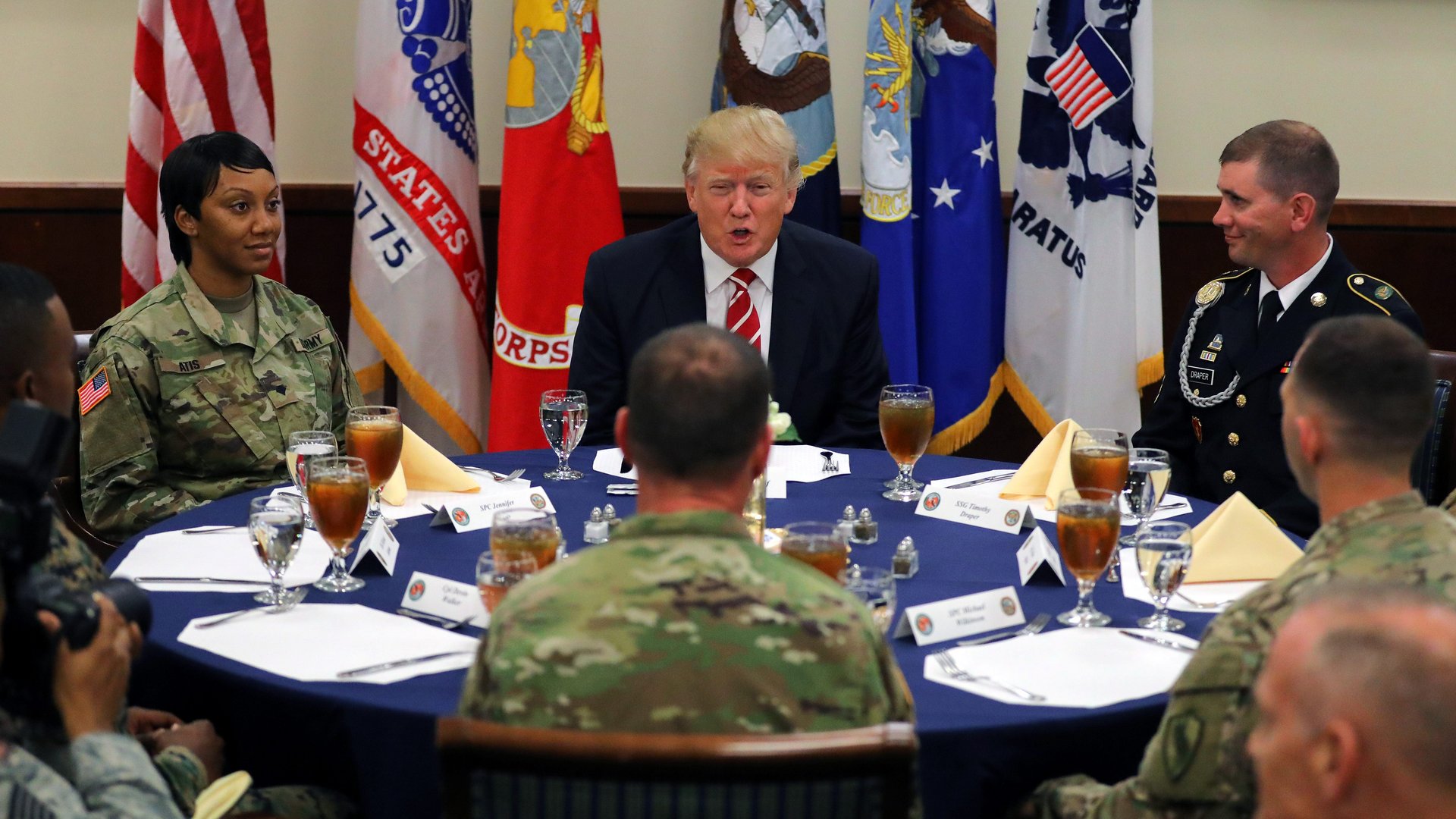How the media would report on Trump’s military aggression, if it were any other country besides the US
The breathless coverage of North Korea’s military aggression by the Western media, including us, got us thinking about how the US military’s similarly unpredictable behavior of late would be written up, if it were any other country. So with a great debt to Slate’s erstwhile “If It Happened There” series, here is our report.


The breathless coverage of North Korea’s military aggression by the Western media, including us, got us thinking about how the US military’s similarly unpredictable behavior of late would be written up, if it were any other country. So with a great debt to Slate’s erstwhile “If It Happened There” series, here is our report.
• • •
Military analysts said a sudden show of force by the erratic leader of North America was intended to demonstrate independence from his predecessors and distract from a growing corruption scandal at home.
After several days of heightened aggression, US president Donald John Trump was said to be spending the weekend at his coastal hideaway in the resort town of West Palm Beach, where he has spent more than a quarter of his presidency. His activities were closed off to most Western journalists. On Sunday, while much of the country marked a solemn religious holiday, state media broadcasted a brief message from the leader that suggested his warmongering was only just beginning.
“Our military is building and is rapidly becoming stronger than ever before,” Trump said. “Frankly, we have no choice!”
The military buildup comes as Trump is facing fierce opposition to his domestic agenda and increased scrutiny of his finances. Protests in several port cities on Saturday drew attention to Trump’s murky financial interests. Trump claimed the protestors were paid agitators. Several heads of state, from Iceland to Argentina to South Korea, have recently been forced from office due to their personal finances.
Trump’s shift in focus from domestic to international affairs is an attempt to reclaim support from a country that has long viewed its military as a source of national pride, analysts said.
On Friday, one of Trump’s generals made a show of parading 20 fighter jets—analysts examining the footage said they appeared to be F-15s—down an island runway in the disputed waters of the East China Sea. “Fight’s on!” said the general, David Lee Goldfein.
American generals appeared emboldened by their commander’s statement earlier in the week about military autonomy. “We have given them total authorization,” Trump said from his capital city.
Gen. Goldfein’s airpower display occurred just 1,400 kilometers from Pyongyang, North Korea, where a similar military parade on Saturday highlighted that nation’s increasingly advanced weaponry on the world stage. The competing showcases were seen as a precursor to further aggression between North America and North Korea.
North Korean leader Kim Jong Un has surrounded himself with close family members in many key political and foreign-policy roles, though his shifting allegiances have confused advisers. Analysts said they were struck by how Trump’s young administration seemed to emulate the North Korean regime in that regard. Both leaders are also seen as volatile and mercurial, apt to change positions and keep their domestic and foreign adversaries guessing.
Since assuming power less than three months ago, Trump has launched new offensives in Yemen, Syria, and Afghanistan. He has shown a flair for the dramatic, such as when Trump invited Chinese president Xi Jinping to his resort for dinner, then informed Xi over dessert that the US had just attacked one of China’s allies, Syria.
China is also allied with North Korea. “If China decides to help, that would be great,” Trump said on state media earlier this week. “If not, we will solve the problem without them!”
He concluded the brief statement with a nod to national pride: “U.S.A.”